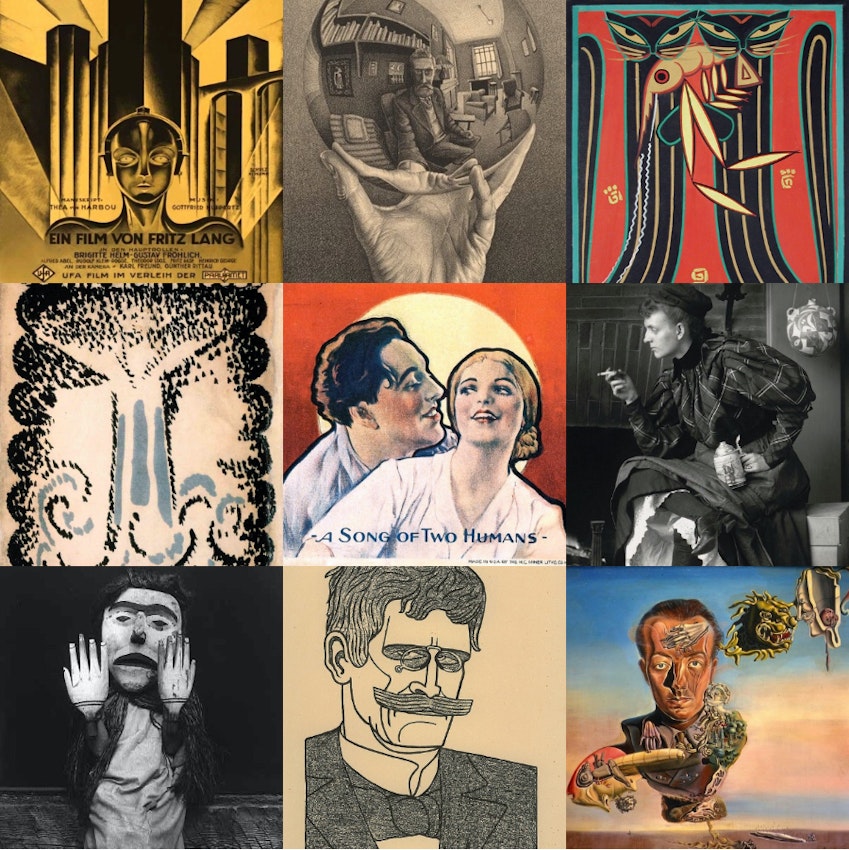 Scroll through the whole page to download all images before printing.
Scroll through the whole page to download all images before printing.As people waken round the world to a brand new year, so the public domain wakens to thousands more works having entered its ever-expanding expanse, including Fritz Lang's Metropolis, Virginia Woolf’s To the Lighthouse, and the works of M. C. Escher and Edward S. Curtis.
Each January 1st is Public Domain Day, where a new crop of works have their copyrights expire and become free to enjoy, share, and reuse for any purpose. Due to differing copyright laws around the world, there is no one single public domain, but there are three definitions which cover most cases. For these three systems, newly entering the public domain today are:
- works by people who died in 1952, for countries with a copyright term of “life plus 70 years” (e.g. UK, Russia, most of EU and South America);
- works by people who died in 1972, for countries with a term of “life plus 50 years” (e.g. New Zealand, and most of Africa and Asia);
- films and books (incl. artworks featured) published in 1927 for the United States.
We normally have Canada listed in the second system above, but in a disappointing development, there'll be no new published works entering the public domain in Canada next year (nor for the next 20 years) after they retroactively extended copyrights on published works from life of the author plus 50 years years to plus 70 years.
There will also be no new sound recordings entering the US public domain this year. Last year we saw a mammoth release of historical sound recordings become copyright-free, but it won't be until 2024 that those from 1923 will join them.
Some of you may have been following our advent-style countdown calendar which revealed day-by-day through December our highlights for these new public domain entrants. The last window was opened yesterday, and while such a format was fun for the slow reveal, for the sake of a good gorgeable list we’ve exploded the calendar out into a digestible array below.
Entering the public domain in the US
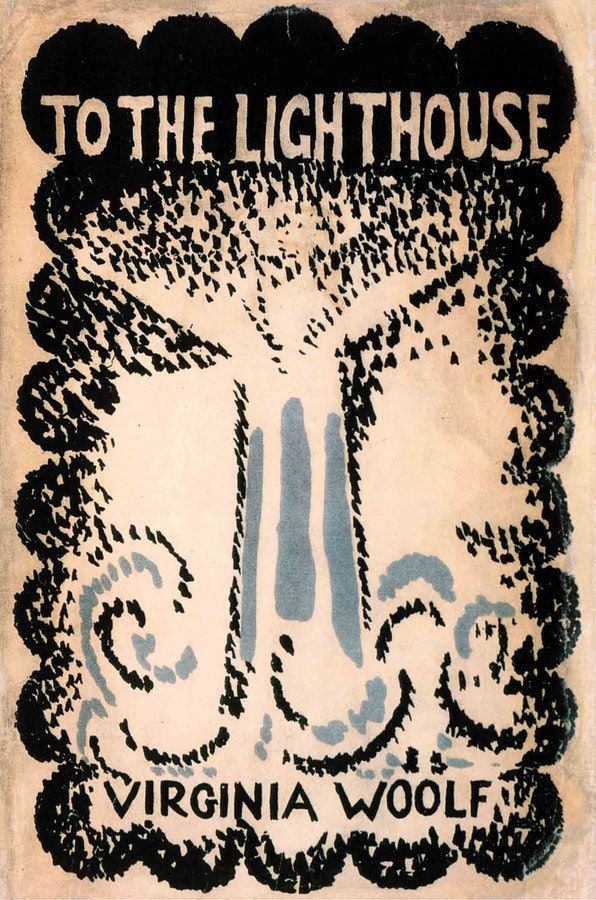 Scroll through the whole page to download all images before printing.
Scroll through the whole page to download all images before printing.Virginia Woolf’s To the Lighthouse
To the Lighthouse is a 1927 novel by Virginia Woolf which centres on the Ramsay family and their visits to the Isle of Skye in Scotland between 1910 and 1920. Following and extending the tradition of modernist novelists like Marcel Proust and James Joyce, the plot of To the Lighthouse is secondary to its philosophical introspection. Cited as a key example of the literary technique of multiple focalization, the novel includes little dialogue and almost no direct action; most of it is written as thoughts and observations. The story is made up of three powerfully charged visions into the life of the Ramsay family, living in a summer house off the rocky coast of Scotland — including the maternal Mrs. Ramsay, the highbrow Mr. Ramsay, their eight children, and assorted holiday guests. From Mr. Ramsay’s seemingly trivial postponement of a visit to a nearby lighthouse, Woolf examines tensions and allegiances and shows that the small joys and quiet tragedies of everyday life are unending. Among the book’s many tropes and themes are those of loss, subjectivity, the nature of art and the problem of perception. In 1998, the Modern Library named To the Lighthouse no. 15 on its list of the 100 best English-language novels of the twentieth century. In 2005, the novel was chosen by TIME magazine as one of the one hundred best English-language novels since 1923. (Wikipedia)
Already public domain in countries with a “life plus 70 years” and “life plus 50 years” copyright.
Read at Faded Page and Project Gutenberg (US text)
See our Virginia Woolf related content
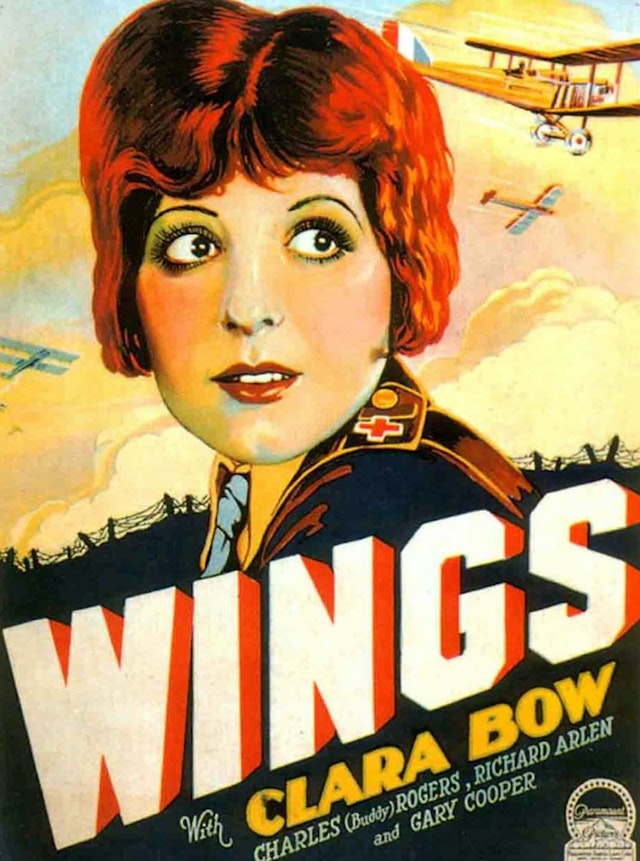 Scroll through the whole page to download all images before printing.
Scroll through the whole page to download all images before printing.Wings directed by William A. Wellman
Wings is a 1927 American silent film directed by William A. Wellman known for winning the first Academy Award for Best Picture. The film stars Clara Bow, Charles “Buddy” Rogers, and Richard Arlen who portray World War I combat pilots in a romantic rivalry over a woman. Acclaimed for its technical prowess and realism upon release, the film became the yardstick against which future aviation films were measured, mainly because of its realistic air-combat sequences. It went on to win the first Academy Award for Best Picture at the first Academy of Motion Picture Arts and Sciences award ceremony in 1929, the only fully silent film to do so. In 1997, it was selected for preservation in the United States National Film Registry by the Library of Congress as being “culturally, historically, or aesthetically significant”. (Wikipedia)
Watch a half hour clip on the Internet Archive
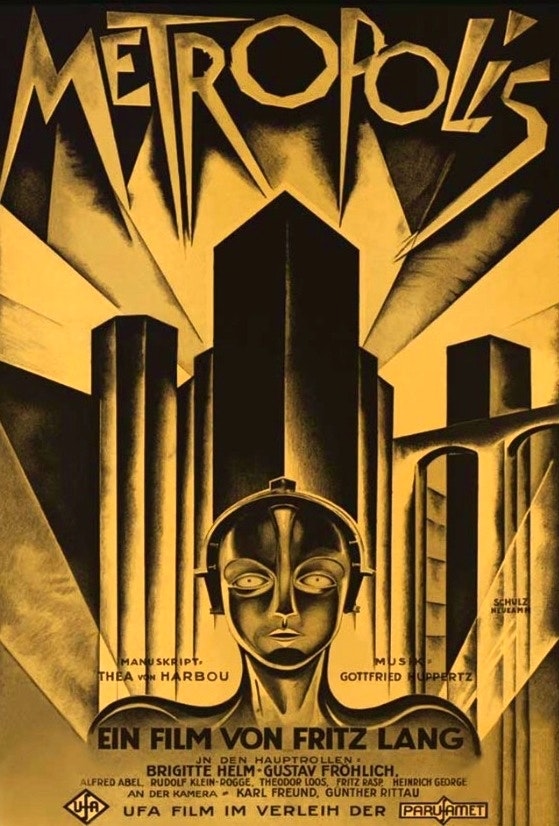 Scroll through the whole page to download all images before printing.
Scroll through the whole page to download all images before printing.Metropolis directed by Fritz Lang
Metropolis is a 1927 German expressionist science-fiction silent film directed by Fritz Lang and written by Thea von Harbou in collaboration with Lang from von Harboul’s 1925 novel of the same name. Intentionally written as a treatment, it is regarded as a pioneering science-fiction movie, being among the first feature-length film of that genre. Made in Germany during the Weimar period, it is set in a futuristic urban dystopia and follows the attempts of Freder, the wealthy son of the city master, and Maria, a saintly figure to the workers, to overcome the vast gulf separating the classes in their city and bring the workers together with Joh Fredersen, the city master. The film’s message is encompassed in the final inter-title: “The Mediator Between the Head and the Hands Must Be the Heart”. While Metropolis met a mixed reception upon release, it is now widely regarded as one of the greatest and most influential films ever made, ranking 35th in Sight & Sound’s 2012 critics’ poll. In 2001, the film was inscribed on UNESCO’s Memory of the World Register, the first film thus distinguished. (Wikipedia)
Watch on the Internet Archive
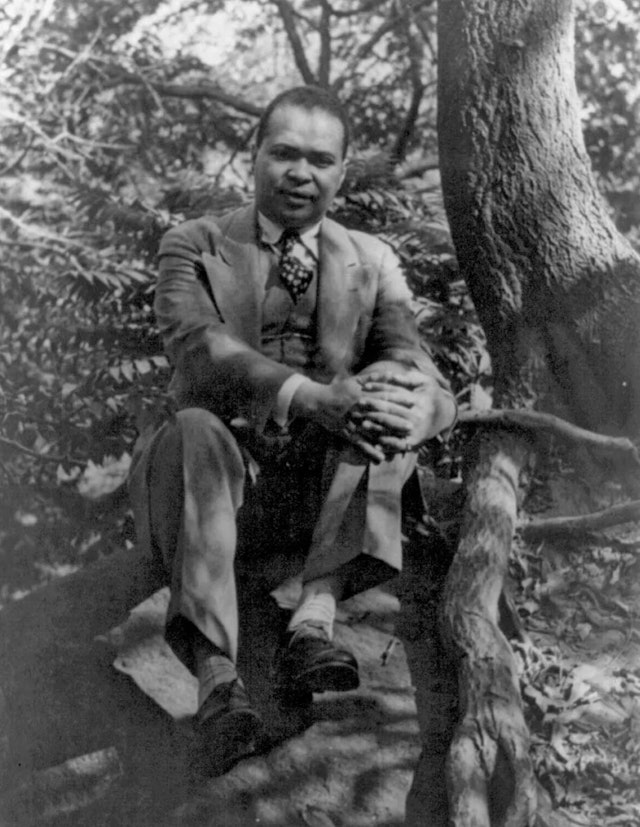 Scroll through the whole page to download all images before printing.
Scroll through the whole page to download all images before printing.Caroling Dusk, an anthology of verse by Black poets of the 1920s
Caroling Dusk: An Anthology of Verse by Negro Poets is a 1927 poetry anthology edited by Harlem Renaissance writer Countee Cullen. The collection includes works by thirty-eight African-American poets (13 of which are women), including Paul Laurence Dunbar, Langston Hughes, Georgia Douglas Johnson, James Weldon Johnson, and Claude McKay. Caroling Dusk is considered one of four major poetry anthologies of the Harlem Renaissance, the others being: The Book of American Negro Poetry (1922), Negro Poets and Their Poems (1923), and An Anthology of Verse by American Negroes (1924). A contemporary review of the collection that appeared in the Sioux City Journal noted that “Negroes must derive much satisfaction out of the fact these 38 men and women and girls and boys of their race are spinning verses much better than the verses many of their white brethren spin.” The reviewer noted that they'd “never shall forget” some of the poems included. The volume was republished at least three times, in 1955, 1974, and 1995. (Wikpedia)
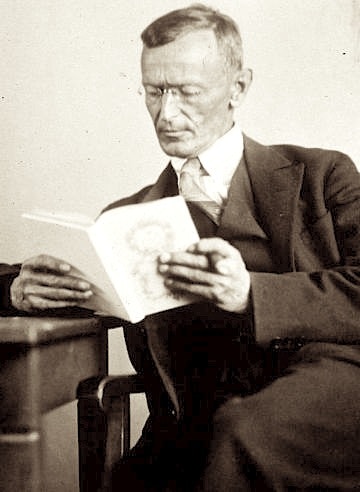 Scroll through the whole page to download all images before printing.
Scroll through the whole page to download all images before printing.Hermann Hesse’s Steppenwolf
Steppenwolf — the tenth novel by German-Swiss author Hermann Hesse — was originally published in Germany in 1927 and first translated into English in 1929. The story is presented as a manuscript written by its protagonist, a middle-aged man named Harry Haller and in large part reflects a profound crisis in Hesse’s spiritual world during the 1920s. In the preface to the novel’s 1960 edition, Hesse wrote that Steppenwolf was “more often and more violently misunderstood” than any of his other books. Hesse felt that his readers focused only on the suffering and despair that are depicted in Haller’s life, thereby missing the possibility of transcendence and healing. Close friends and longtime readers of Hesse criticized the novel for its perceived lack of morality in its open depiction of sex and drug use, a criticism that indeed remained the primary rebuff of the novel for many years. Popular interest was renewed in the 1960s — specifically in the psychedelic movement — primarily because it was seen as a counterculture book, and because of its depiction of free love and explicit drug use. (Wikipedia)
Already public domain in countries with a “life plus 50 years” copyright.
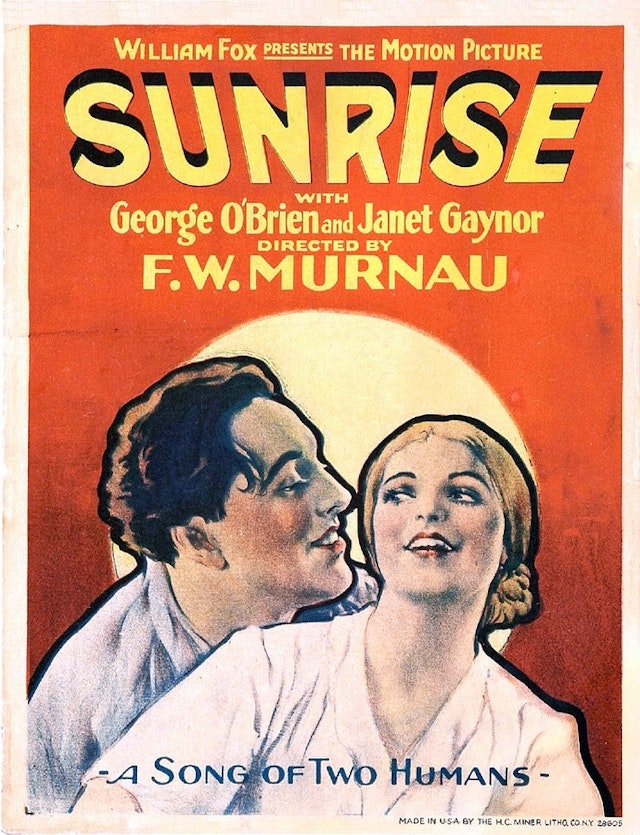 Scroll through the whole page to download all images before printing.
Scroll through the whole page to download all images before printing.Sunrise: A Song of Two Humans directed by F. W. Murnau
Sunrise: A Song of Two Humans (also known as Sunrise) is a 1927 American silent romantic drama directed by German director F. W. Murnau (in his American film debut) and starring George O’Brien, Janet Gaynor, and Margaret Livingston. The story — which tells of how a poor farmer, though happily married, begins a torrid affair with a sophisticated woman from the city — was adapted by Carl Mayer from the short story “The Excursion to Tilsit” by Hermann Sudermann. Noted for its use of a synchronized musical score and sound effects soundtrack — one of the first feature films to do so — the film incorporates Charles Gounod’s 1872 composition Funeral March of a Marionette and Frédéric Chopin’s A minor prelude. The British Film Institute’s 2012 Sight & Sound critics’ poll named it the fifth-best film in the history of motion pictures. (Wikipedia)
Already public domain in countries with a “life plus 70 years” and “life plus 50 years” copyright.
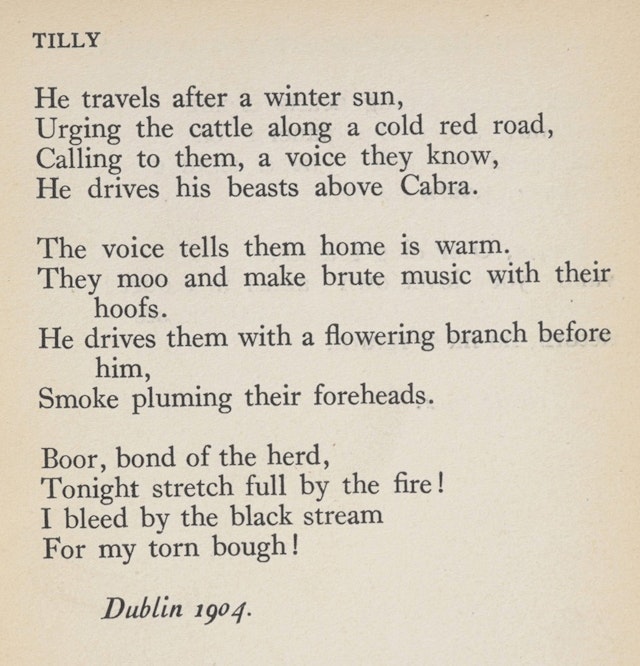 Scroll through the whole page to download all images before printing.
Scroll through the whole page to download all images before printing.James Joyce’s Pomes Penyeach
Pomes Penyeach — a collection of thirteen short poems written by James Joyce — was written over a 20-year period, from 1904 to 1924, and originally published on 7 July 1927 by Shakespeare and Company, for the price of one shilling (twelve pennies) or twelve francs. The title is a play on “poems” and pommes (the French word for apples) which are here offered at “a penny each” in either currency. It was the custom for Irish tradespeople of the time to offer their customers a “tilly” (in Irish, tuilleadh) or extra serving — just as English bakers had developed the tradition of the “baker’s dozen”, offering thirteen loaves instead of twelve. The first poem of Pomes Penyeach is entitled “Tilly” and represents the bonus offering of this penny-a-poem collection. Although paid scant attention on its initial publication, this slender volume (which contains fewer than 1000 words in total) has proven surprisingly durable, and a number of its poems (particularly “Tilly”, “A flower given to my daughter”, “On the beach at Fontana”, and “Bahnhofstrasse”) continue to appear in anthologies to this day.
Pomes Penyeach contains a number of Joycean neologisms (“rosefrail”, “moongrey” and “sindark”, for example) created by melding two words into a new compound. The word “love” appears thirteen times in this collection of thirteen short poems (and the word “heart” appears almost as frequently) in a variety of contexts. Sometimes romantic love is intended, in tones that vary from sentimental or nostalgic (“O sighing grasses,/ Vainly your loveblown bannerets mourn!”) to scathing (“They mouth love’s language. Gnash/ The thirteen teeth/ Your lean jaws grin with”). Yet at its best Joyce’s poetry achieves, like his prose, a sense of vitality and loving compassion. (“From whining wind and colder/ Grey sea I wrap him warm/ And touch his trembling fineboned shoulder/ And boyish arm. // Around us fear, descending/ Darkness of fear above/ And in my heart how deep unending/ Ache of love!”) (Wikipedia)
Already public domain in countries with a “life plus 70 years” and “life plus 50 years” copyright.
Read at Wikisource and British Library
See our James Joyce related content
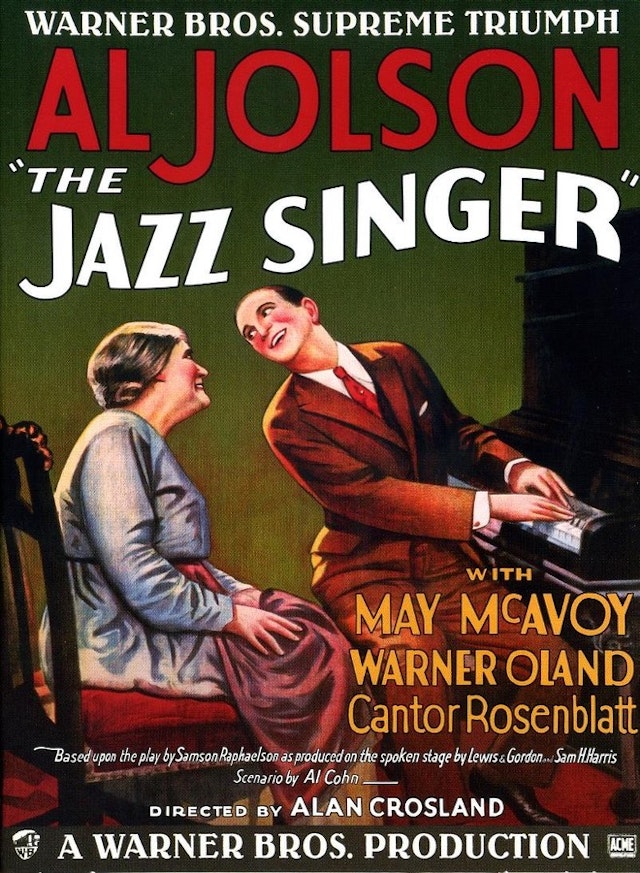 Scroll through the whole page to download all images before printing.
Scroll through the whole page to download all images before printing.The Jazz Singer
The Jazz Singer — a 1927 American musical drama film directed by Alan Crosland — was the first feature-length motion picture with both synchronized recorded music score as well as lip-synchronous singing and speech (in several isolated sequences). Its release heralded the commercial ascendance of sound films and effectively marked the end of the silent film era. It was produced by Warner Bros. with the Vitaphone sound-on-disc system and features six songs performed by Al Jolson. Based on the 1925 play of the same title by Samson Raphaelson (with a plot adapted from his short story “The Day of Atonement”), the film depicts the story of Jakie Rabinowitz, a young man who defies the traditions of his devout Jewish family to pursue his dream of becoming a popular singer. Jack’s use of blackface in his Broadway stage act — a common practice at the time — is the primary focus of many Jazz Singer studies. In 1996, The Jazz Singer was selected for preservation in the United States National Film Registry by the Library of Congress as being “culturally, historically or aesthetically significant”. In 1998, the film was chosen in voting conducted by the American Film Institute as one of the best American films of all time, ranking at number ninety. (Wikipedia)
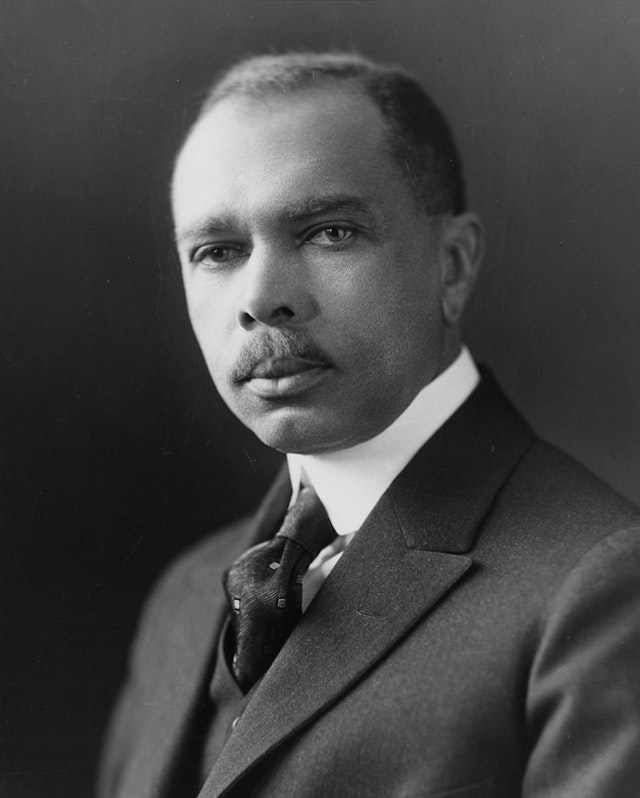 Scroll through the whole page to download all images before printing.
Scroll through the whole page to download all images before printing.James Weldon Johnson’s God’s Trombones
God’s Trombones: Seven Negro Sermons in Verse is a 1927 book of poems by James Weldon Johnson patterned after traditional African-American religious oratory. Scholars Henry Louis Gates and Cornel West have identified the collection as one of Johnson’s two most notable works, the other being Autobiography of an Ex-Colored Man. Johnson explains the title’s use of the trombone by discussing the vocal and rhetorical qualities of a preacher he had recently heard who, he felt, exemplified the compelling and persuasive nature of the folk preacher, naming the trombone as “the instrument possessing above all others the power to express the wide and varied range of emotions encompassed by the human voice — and with greater amplitude.” (Wikipedia)
Already public domain in countries with a “life plus 70 years” and “life plus 50 years” copyright.
Read at University of North Carolina
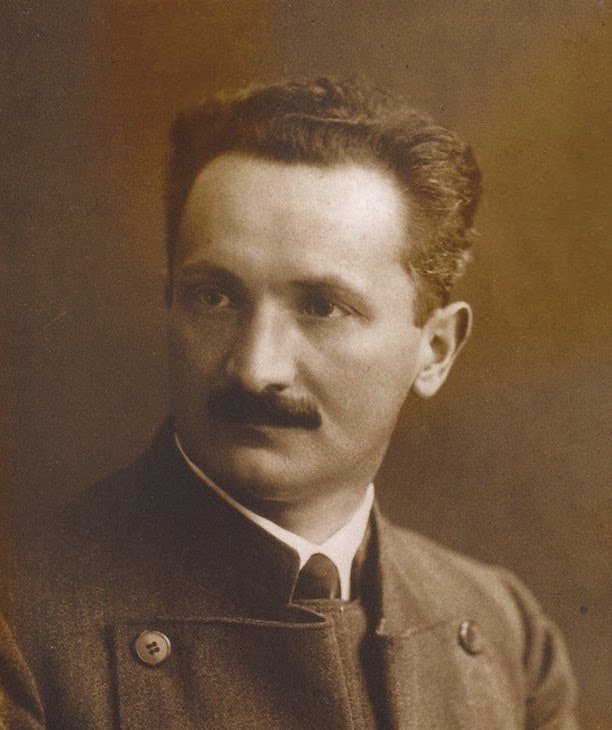 Scroll through the whole page to download all images before printing.
Scroll through the whole page to download all images before printing.Martin Heidegger’s Being and Time
Being and Time (in German, Sein und Zeit) is the 1927 magnum opus of German philosopher Martin Heidegger and a key document of existentialism. The work — which attempts to revive ontology through an analysis of Dasein, or “being-in-the-world” — had a notable impact on subsequent philosophy, literary theory and many other fields. It is also noted for an array of neologisms and complex language, as well as an extended treatment of “authenticity” as a means to grasp and confront the unique and finite possibilities of the individual. (Wikipedia)
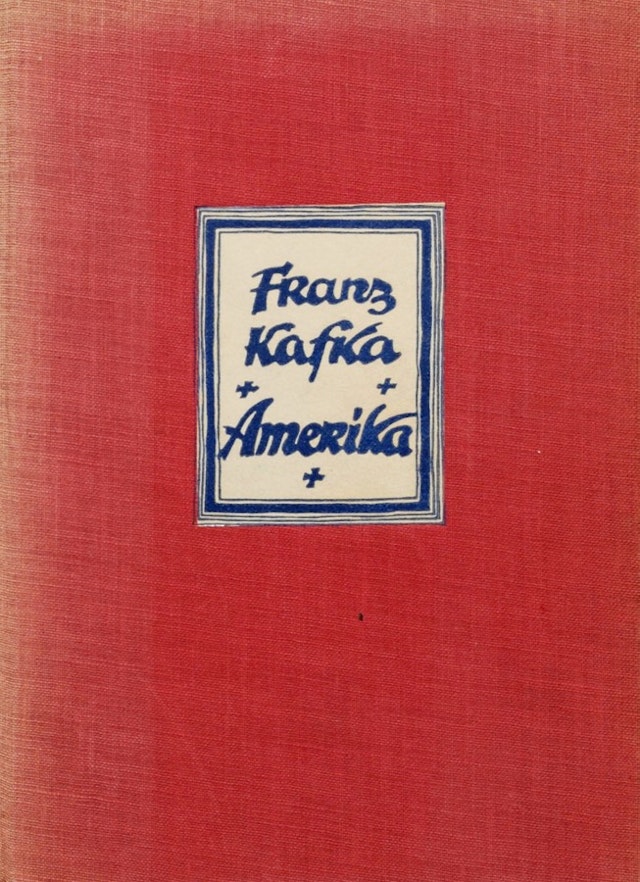 Scroll through the whole page to download all images before printing.
Scroll through the whole page to download all images before printing.Franz Kafka’s Amerika
Amerika — also known, in English, as The Man Who Disappeared, The Missing Person and as Lost in America — is the incomplete first novel by Franz Kafka, written between 1911 and 1914 and published posthumously in 1927. The novel originally began as a short story titled “The Stoker” and incorporates many details of the experiences of his relatives who had emigrated to the United States. The story describes the bizarre wanderings of sixteen-year-old European immigrant Karl Roßmann, who was forced to go to New York City to escape the scandal of his seduction by a housemaid. It is more explicitly humorous but slightly more realistic (except in the last chapter) than most of Kafka’s works, but it shares the same motifs of an oppressive and intangible system putting the protagonist repeatedly in bizarre situations. (Wikipedia)
Already public domain in countries with a “life plus 70 years” and “life plus 50 years” copyright.
Read at zeno.org
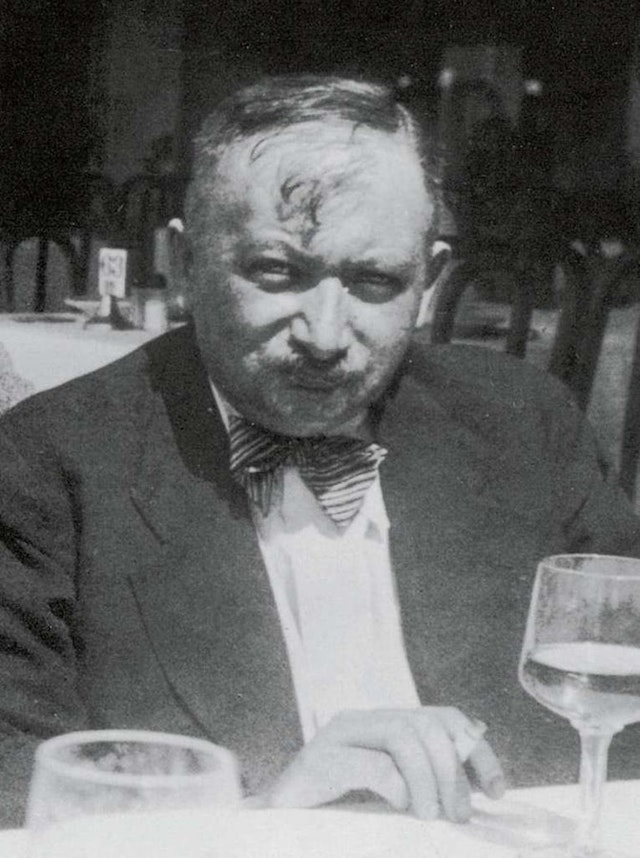 Scroll through the whole page to download all images before printing.
Scroll through the whole page to download all images before printing.Joseph Roth’s Flight without End
Flight without End (in German, Die Flucht ohne Ende) is a 1927 novel by the Austrian writer Joseph Roth. Set in the period between August 1916 and August 1926, it starts in the city of Irkutsk and ends in Paris. During his European wanderings the protagonist lives in Ukraine, Baku, Vienna and an unspecified German university town on the Rhine. (Wikipedia)
Already public domain in countries with a “life plus 70 years” and “life plus 50 years” copyright.
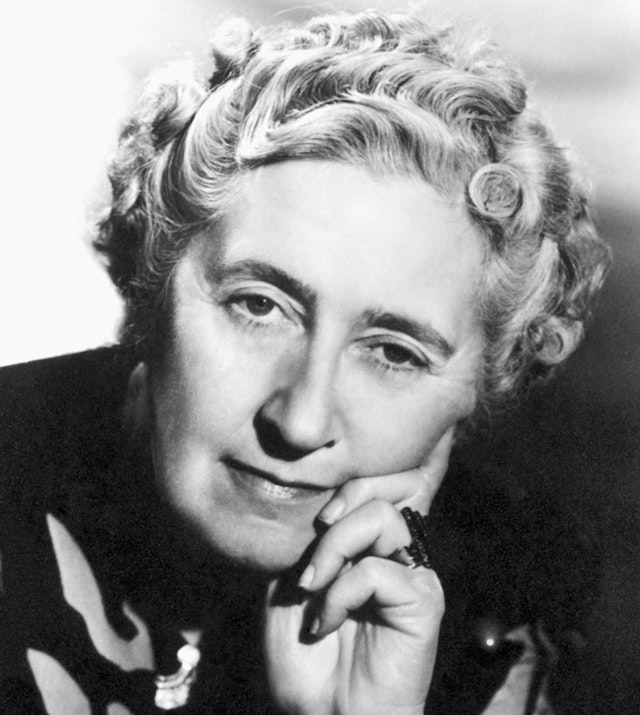 Scroll through the whole page to download all images before printing.
Scroll through the whole page to download all images before printing.Agatha Christie’s “The Tuesday Night Club”
The short story “The Tuesday Night Club” by Agatha Christie features the print debut of Christie’s amateur detective Miss Marple. First published in 1927 in The Royal Magazine, the short story concerns a club of friends who meet every Tuesday to take turns narrating a real-life mystery which the others attempt to solve. Its first publication in book form was in the collection Best Detective Stories of the Year 1928 published by Faber and Faber, and later appeared as the opening chapter in The Thirteen Problems (1932). (Wikipedia)
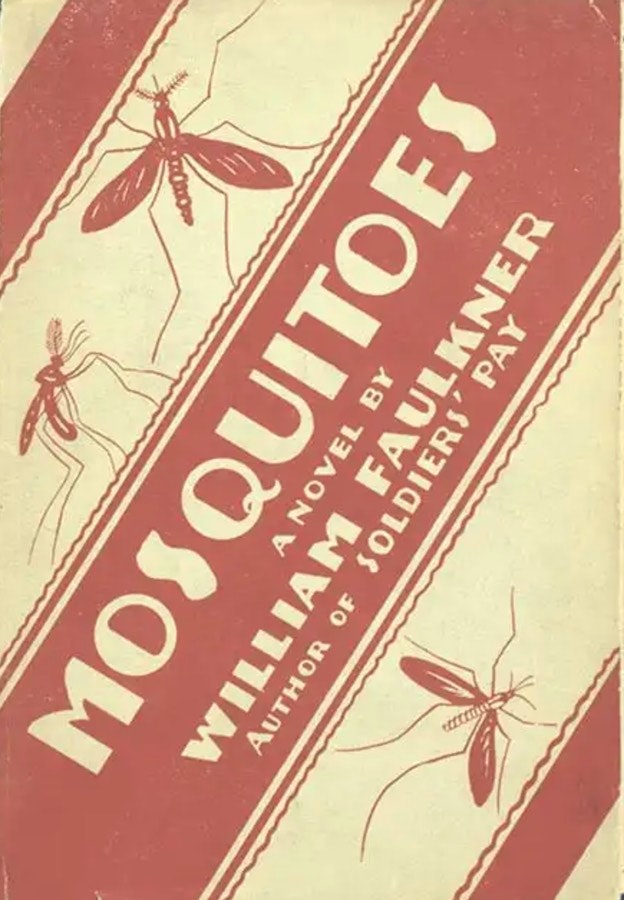 Scroll through the whole page to download all images before printing.
Scroll through the whole page to download all images before printing.William Faulkner’s Mosquitoes
Mosquitoes, published in 1927, is the second novel by the American author William Faulkner. Sources conflict regarding whether Faulkner wrote the book during his time living in Paris, beginning in 1925 or in Pascagoula, Mississippi in the summer of 1926. It is, however, widely agreed upon that not only its setting, but also its content clearly reference Faulkner’s personal involvement in the New Orleans creative community where he spent time before moving to France. Beginning and ending in the city, the story follows a diverse cast of artists, aesthetes, and adolescents as they embark on a four-day excursion aboard the motorized yacht, the Nausikaa, owned by a wealthy patron of the arts. The novel is organized into six sections: a prologue which introduces the characters, four body sections each of which documents a day of the yacht trip hour-by-hour, and an epilogue which returns the characters, changed or unchanged, to their lives off the boat. Inspiration for Mosquitoes has been traced to a specific yachting excursion in Faulkner’s life that took place in April 1925 on Lake Pontchartrain. Attendees were members of the real-life New Orleans’ artistic community and included artist William Spratling, novelist Hamilton Basso, and novelist and short-story writer Sherwood Anderson. (Wikipedia)
Already public domain in countries with a “life plus 50 years” copyright.
Entering the public domain in countries with a ‘life plus 70 year’ copyright term
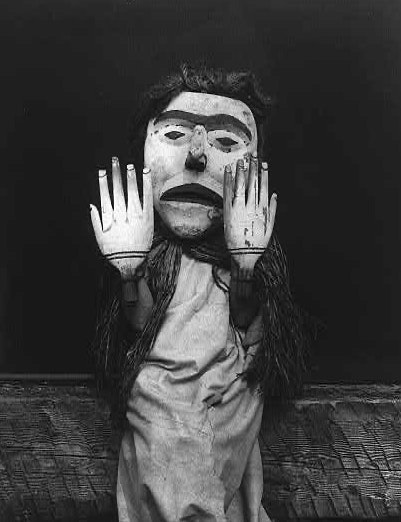 Scroll through the whole page to download all images before printing.
Scroll through the whole page to download all images before printing.Edward S. Curtis
Edward Sherriff Curtis (1868–1952) was an American photographer and ethnologist whose work focused on the American West and on Native American people. His life-defining project was The North American Indian. Spanning forty volumes and four decades, the goal of the project was not just to photograph but also document as much of Native American traditional life as possible before that way of life disappeared. He wrote in the introduction to his first volume in 1907, “The information that is to be gathered ... respecting the mode of life of one of the great races of mankind, must be collected at once or the opportunity will be lost.” Over the project’s course Curtis made over 10,000 wax cylinder recordings of Native American language and music, and took over 40,000 photographic images of members of over 80 tribes. In addition to recording tribal lore and history, and describing traditional foods, housing, garments, recreation, ceremonies, and funeral customs, he wrote biographical sketches of tribal leaders. In 1912, he set about making In the Land of the Head Hunters, a 1914 silent film fictionalizing the world of the Kwakwaka’wakw peoples of the Queen Charlotte Strait region of the Central Coast of British Columbia, Canada. It was written and directed by Curtis and acted entirely by Kwakwaka’wakw native people. (Wikipedia)
Works by Edward S. Curtis on Wikimedia Commons and Library of Congress
See our post on Curtis’ photographs of Kwakwaka’wakw Ceremonial Dress and Masks (ca. 1914)
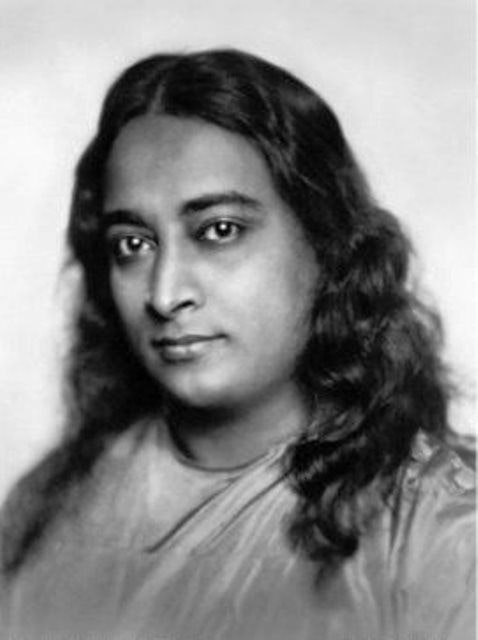 Scroll through the whole page to download all images before printing.
Scroll through the whole page to download all images before printing.Paramahansa Yogananda
Paramahansa Yogananda (1893–1952) was an Indian Hindu monk, yogi, and guru who introduced millions to the teachings of meditation and Kriya Yoga through his organization Self-Realization Fellowship (SRF) / Yogoda Satsanga Society (YSS) of India, and who lived his last 32 years in America. A chief disciple of the Bengali yoga guru Swami Sri Yukteswar Giri, he was sent by his lineage to spread the teachings of yoga to the West, to prove the unity between Eastern and Western religions and to preach a balance between Western material growth and Indian spirituality. His long-standing influence in the American yoga movement, and especially the yoga culture of Los Angeles, led him to be considered by yoga experts as the “Father of Yoga in the West.” He published his book, Autobiography of a Yogi, in 1946, to critical and commercial acclaim; since its first publishing, it has sold over four million copies, with HarperSan Francisco listing it as one of the “100 best spiritual books of the 20th Century”. Former Apple CEO Steve Jobs ordered 500 copies of the book for his own memorial, for each guest to be given a copy. (Wikipedia)
Works by Paramahansa Yogananda at Project Gutenberg and Internet Archive
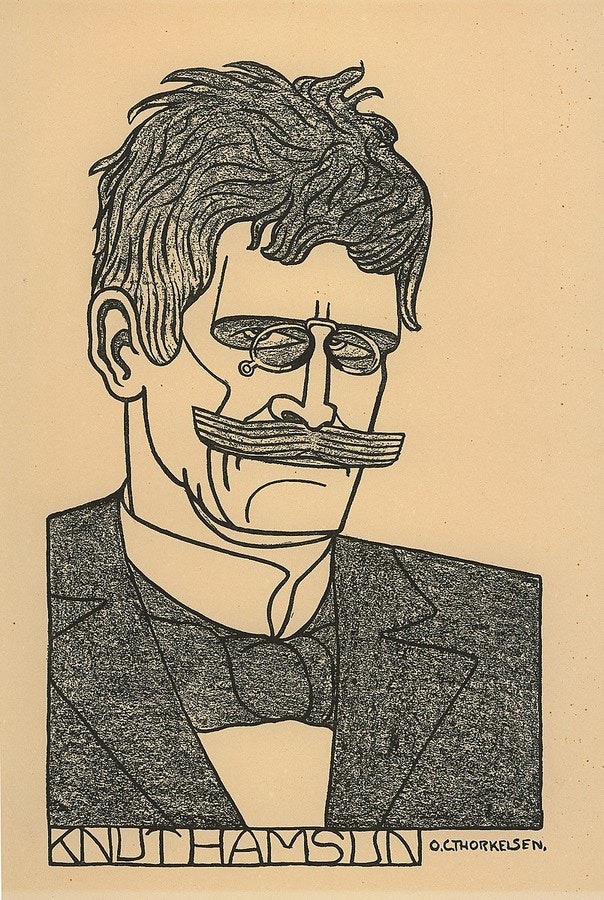 Scroll through the whole page to download all images before printing.
Scroll through the whole page to download all images before printing.Knut Hamsun
Knut Hamsun (1859–1952) was a Norwegian writer who was awarded the Nobel Prize in Literature in 1920. Hamsun’s work spans more than 70 years and shows variation with regard to consciousness, subject, perspective and environment. He published more than 20 novels, a collection of poetry, some short stories and plays, a travelogue, works of non-fiction and some essays. A pioneer in psychological literature with techniques of stream of consciousness and interior monologue, he influenced authors such as Thomas Mann, Franz Kafka, Maxim Gorky, Stefan Zweig, Henry Miller, Hermann Hesse, John Fante, and Ernest Hemingway. Isaac Bashevis Singer called Hamsun “the father of the modern school of literature in his every aspect — his subjectiveness, his fragmentariness, his use of flashbacks, his lyricism. The whole modern school of fiction in the twentieth century stems from Hamsun”. (Wikipedia)
Works by Knut Hamsun at Project Gutenberg and Internet Archive
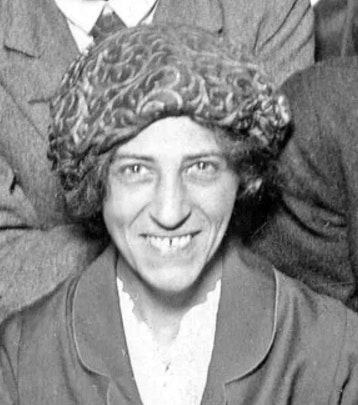 Scroll through the whole page to download all images before printing.
Scroll through the whole page to download all images before printing.Céline Arnauld
Céline Arnauld (1885–1952) was a poet associated with Dadaism. Arnauld’s poetry appears earliest in her first published volume of 1914, titled La Lanterne magique (The Magic Lantern). She followed this in 1919 with her first and only published novel, the experimental Tournevire. During her Paris Dada years she published three further volumes of poetry — Poèmes à claires-voies (1920), Point de mire (1921), and Guêpier de diamants (1923) — but her work perhaps found its fullest expression in two collections of the 1930s — La nuit reve tout haut (1934) and Heures intactes (1936). She published until 1948, though all of her texts are rare and some are considered lost. Arnauld was also part of Dada performances. In March 1920, she is credited in the program of the Manifestation Dada de la Maison d’Oeuvre as “the pregnant woman” in “La Première Aventure Céleste de M. Antipyrine” (The First Heavenly Adventure of Mr. Antipyrine) by Tristan Tzara. Two months later, she is recorded as an author and performer of a dialogue called “Jeu d’échecs” (Chessboard) in the Festival Dada at the Salle Gaveau. She died by suicide in 1952. (Wikipedia)
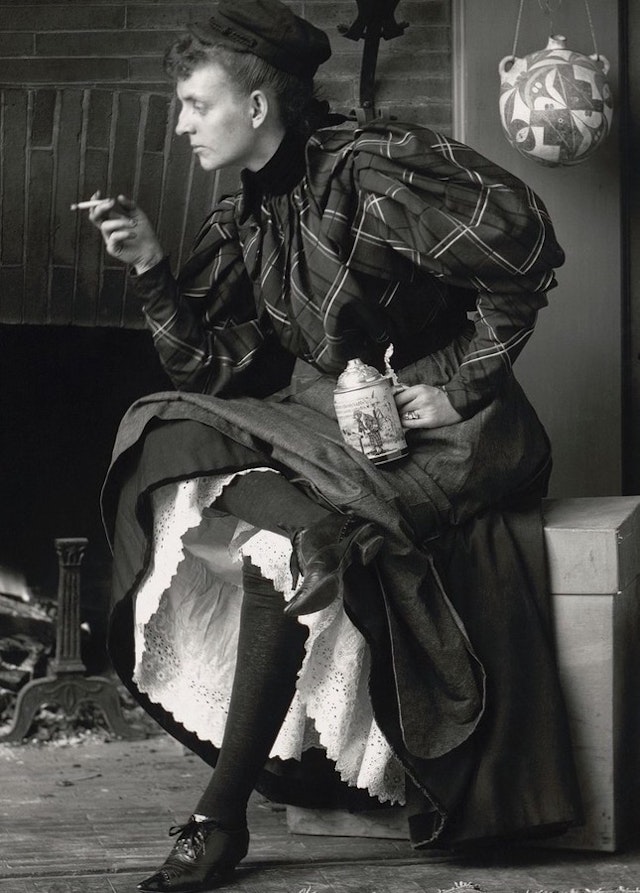 Scroll through the whole page to download all images before printing.
Scroll through the whole page to download all images before printing.Frances Benjamin Johnston
Frances Benjamin Johnston (1864–1952) was an early American photographer and photojournalist whose career lasted for almost half a century. She is most known for her portraits, images of southern architecture, and various photographic series featuring African Americans and Native Americans at the turn of the twentieth century. Perhaps her most famous work is her self-portrait as the liberated “New Woman”, with petticoats showing and a beer stein in hand. Johnston advocated for the role of women in the burgeoning art of photography. In 1897 the Ladies’ Home Journal published Johnston’s article “What a Woman Can Do With a Camera”, describing how to achieve artistic and financial success in photography as a profession. With Zaida Ben-Yusuf, Johnston co-curated an exhibition of photographs by twenty-eight women photographers at the 1900 Exposition Universelle in Paris. In 1899, Johnston was commissioned by Hollis Burke Frissell to photograph the buildings and students of the Hampton Normal and Agricultural Institute in Hampton, Virginia in order to show the success of this primarily black institution. The resulting series — considered among her most important work — was displayed at The Exhibit of American Negroes of the Paris Exposition Universelle in 1900. Her life partner was Mattie Edwards Hewitt, a photographer who specialised in architecture and with whom she established the “Johnston-Hewitt Studio” in New York City in 1913. (Wikipedia)
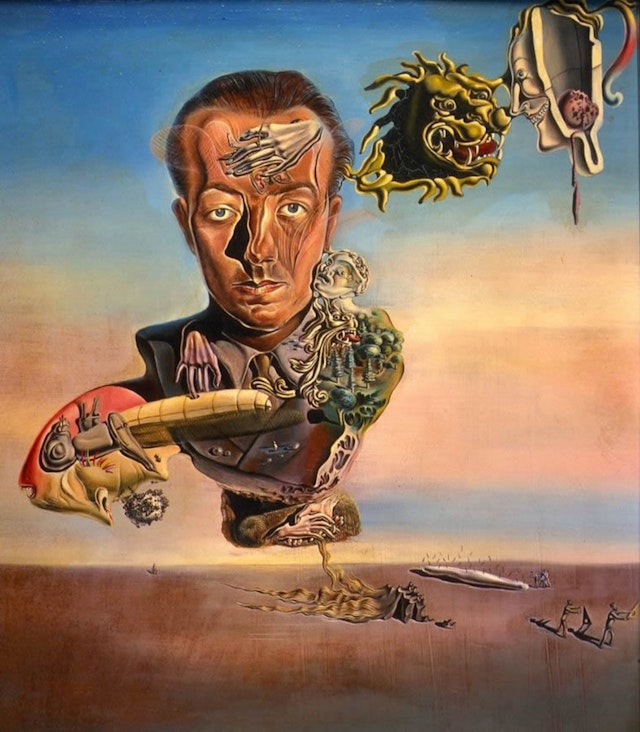 Scroll through the whole page to download all images before printing.
Scroll through the whole page to download all images before printing.Paul Éluard
Paul Éluard (1895–1952), was a French poet and one of the founders of the Surrealist movement. He adhered to Dadaism and became one of the pillars of Surrealism by opening the way to artistic action politically committed to the Communist Party. During World War II, he was the author of several poems against Nazism that circulated clandestinely, and thousands of copies of the twenty-one stanzas of his poem “Liberté”, first published in the Choix revue, were parachuted from British aircraft over Occupied France. He became known worldwide as The Poet of Freedom and is considered by many to be the most gifted of French surrealist poets. His many volumes of poetry include: Répétitions (1922), Les Malheurs des immortels, with Max Ernst (1922), Capitale de la douleur (1926) and Les sept poèmes d’amour en guerre (1944). (Wikipedia)
Works by Paul Éluard on Project Gutenberg, French Wikisource and Internet Archive
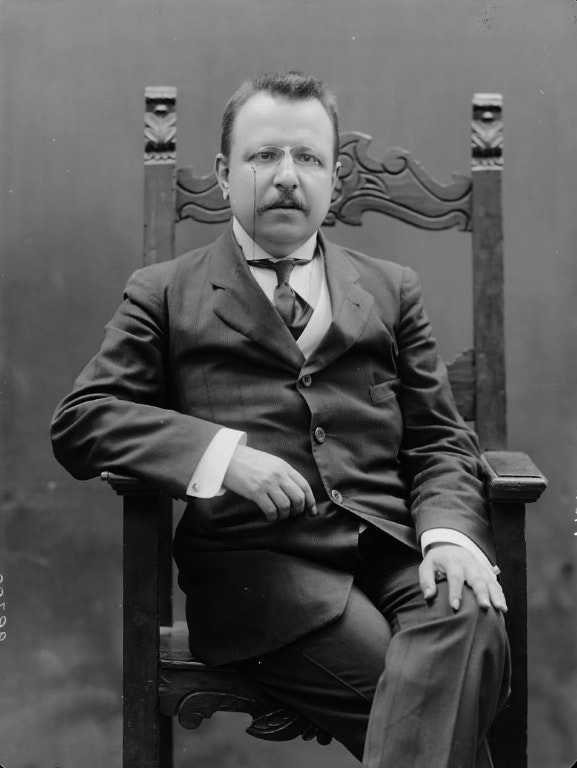 Scroll through the whole page to download all images before printing.
Scroll through the whole page to download all images before printing.Benedetto Croce
Benedetto Croce (1866–1952) was an Italian idealist philosopher, historian, and politician, who wrote on numerous topics, including philosophy, history, historiography and aesthetics. In most regards, Croce was a liberal, although he opposed laissez-faire, free trade, and had considerable influence on other Italian intellectuals, including both Marxist Antonio Gramsci and Italian Fascist Giovanni Gentile. Croce was the president of PEN International, the worldwide writers’ association, from 1949 until 1952. He was nominated for the Nobel Prize in Literature sixteen times. He is also noted for his “major contributions to the rebirth of Italian democracy”. (Wikipedia)
Works by Benedetto Croce at Project Gutenberg and Internet Archive
.jpeg?fit=max&w=640&h=1200) Scroll through the whole page to download all images before printing.
Scroll through the whole page to download all images before printing.Maria Montessori
Maria Tecla Artemisia Montessori (1870–1952) was an Italian physician and educator best known for the philosophy of education that bears her name, and her writing on scientific pedagogy. At an early age, Montessori enrolled in classes at an all-boys technical school, with hopes of becoming an engineer. She soon had a change of heart and began medical school at the Sapienza University of Rome, becoming one of the first women to attend medical school in Italy; she graduated with honors in 1896. Her educational method — which involves children’s natural interests and activities rather than formal teaching methods — is in use today in many public and private schools globally. (Wikipedia)
Works by Maria Montessori on Project Gutenberg and Internet Archive
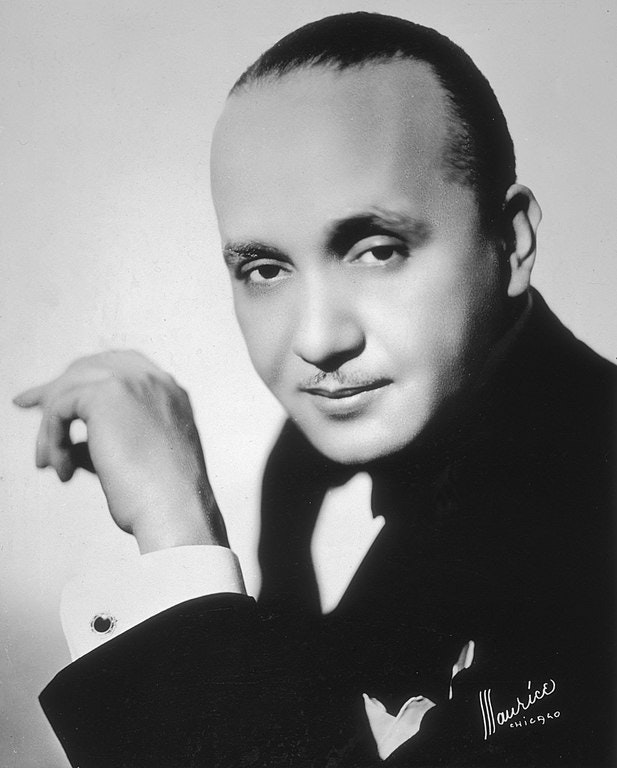 Scroll through the whole page to download all images before printing.
Scroll through the whole page to download all images before printing.Fletcher Henderson
James Fletcher Hamilton Henderson (1897–1952) was an American pianist, bandleader, arranger, and composer, important in the development of big band jazz and swing music. He was one of the most prolific black musical arrangers and, along with Duke Ellington, is considered one of the most influential arrangers and bandleaders in jazz history. Henderson’s influence was vast. He helped bridge the gap between the Dixieland and the swing eras. He was often known as “Smack” Henderson (because of smacking sounds he made with his lips). (Wikipedia)
Recordings involving Fletcher Henderson at Library of Congress
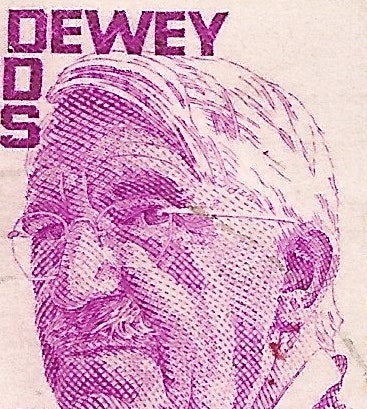 Scroll through the whole page to download all images before printing.
Scroll through the whole page to download all images before printing.John Dewey
John Dewey (1859–1952) was an American philosopher, psychologist, and educational reformer whose ideas have been influential in education and social reform. He was one of the most prominent American scholars in the first half of the twentieth century. The overriding theme of his works was his profound belief in democracy, be it in politics, education, or communication and journalism. In addition to being one of the primary figures in the philosophy of pragmatism, and considered one of the fathers of functional psychology, he was also a major educational reformer and a major voice of progressive education and liberalism. Although Dewey is known best for his publications about education, he also wrote about many other topics, including epistemology, metaphysics, aesthetics, art, logic, social theory, and ethics. (Wikipedia)
Works by John Dewey on Project Gutenberg and Internet Archive
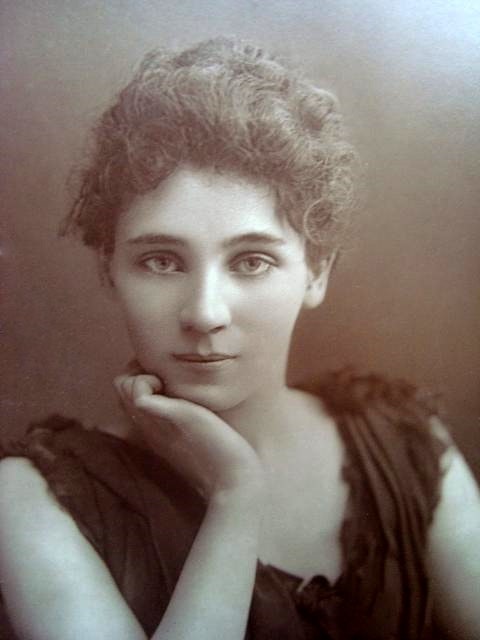 Scroll through the whole page to download all images before printing.
Scroll through the whole page to download all images before printing.Elizabeth Robins
Elizabeth Robins (1862–1952) was an actress, playwright, novelist, and suffragette. As an actress, she won many admirers including Oscar Wilde who said (of her role in Frances Hodgson Burnett’s The Real Little Lord Fauntleroy in 1889) that “you have definitely asserted your position as an actress of the first order. Your future on our stage is assured.” Early in her time in London, she became enamored with Ibsen’s plays and with Marion Lea with whom she would form a joint management company, making this the “first step toward the theatre that Robins had dreamed of … a theatre of independent management and artistic standards.” Finding work in “‘women’s plays’ written by men like Ibsen,” Robins and Lea brought strong female characters to the stage, such as Hedda Gabler. From then on, Hedda became synonymous with Robins on the English stage and she and Lea would go on to produce a handful of Ibsen’s other ‘New Woman’ plays and she became known as “Ibsen’s High Priestess”. Robins also wrote many novels (some under the name of C. E. Raimond) including Magnetic North (1904) and Come and Find Me (1908) about the search for her missing brother. She became a member of the National Union of Women’s Suffrage Societies, as well as the Women’s Social and Political Union, although she broke with the WSPU over its increasing use of violent militancy. She remained a strong advocate of women’s rights, however, and used her gifts as a public speaker and writer on behalf of the cause. In 1907, her book The Convert was published and was later turned into a play that became synonymous with the suffrage movement. (Wikipedia)
Works by Elizabeth Robins at Project Gutenberg and Internet Archive
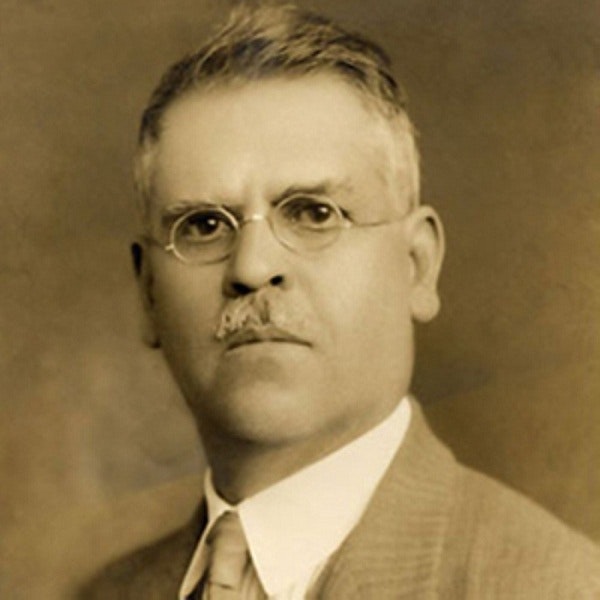 Scroll through the whole page to download all images before printing.
Scroll through the whole page to download all images before printing.Mariano Azuela
Mariano Azuela González (1873–1952) was a Mexican author and physician, best known for his fictional stories of the Mexican Revolution of 1910. He wrote novels, works for theatre, and literary criticism. He is the first of the “novelists of the Revolution,” and he influenced other Mexican novelists of social protest. Among Azuela’s first published writing were some short pieces for the magazine Gil Blas Cómico, where he wrote under the pen name of “Beleño”, and his writing published under the heading Impresiones de un estudiante (Impressions of a Student) in 1896. His first novel, Maria Luisa, was written in 1907, followed by Los fracasados (The Failures) in 1908, and Mala yerba (Weeds) in 1909. The theme of his beginning novels are about fate and he wrote of the social life of Mexicans during the Díaz dictatorship. After experiencing the Mexican Revolution first-hand, his writing style became sarcastic and disillusioned. His first novel with the Revolution theme is Andrés Pérez, maderista in 1911, followed by Sin Amor (Without Love) in 1912, and his most popular, Los de abajo (The Underdogs) in 1915. (Wikipedia)
Works by Mariano Azuela at Project Gutenberg and Internet Archive
Entering the public domain in countries with a ‘life plus 50 year’ copyright term
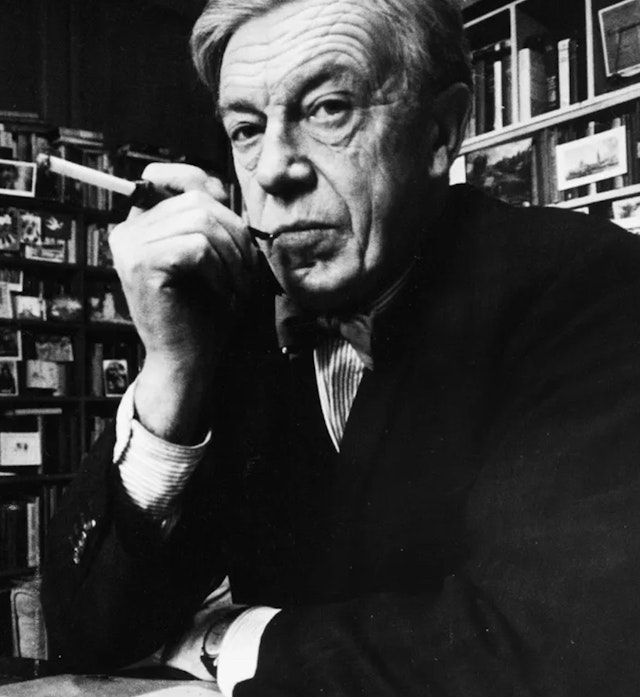 Scroll through the whole page to download all images before printing.
Scroll through the whole page to download all images before printing.Cecil Day-Lewis
Cecil Day-Lewis CBE (1904–1972) was an Irish-born, British poet and Poet Laureate from 1968 until his death in 1972. He also wrote mystery stories under the pseudonym of Nicholas Blake. During World War II, Day-Lewis worked as a publications editor in the Ministry of Information for the UK government, and also served in the Musbury branch of the British Home Guard. While studying at Oxford, Day-Lewis became part of the circle gathered around W. H. Auden and helped him to edit Oxford Poetry (1927). His first collection of poems, Beechen Vigil, appeared in 1925. In his youth and during the disruption and suffering of the Great Depression, Day-Lewis adopted communist views, becoming a member of the Communist Party of Great Britain from 1935 to 1938. His early poetry was marked by didacticism and a focus on social themes. In 1937, he edited The Mind in Chains: Socialism and the Cultural Revolution and in the introduction supported a popular front against a “Capitalism that has no further use for culture”. During the Second World War, his work was less influenced by Auden and he was developing a more traditional style of lyricism. Some critics believe that he reached his full stature as a poet in Word Over All (1943), when he finally distanced himself from Auden. After the war, he joined the publisher Chatto & Windus as a director and senior editor. He is the father of actor Sir Daniel Day-Lewis, and documentary filmmaker and television chef Tamasin Day-Lewis. (Wikipedia)
Watch on the Internet Archive
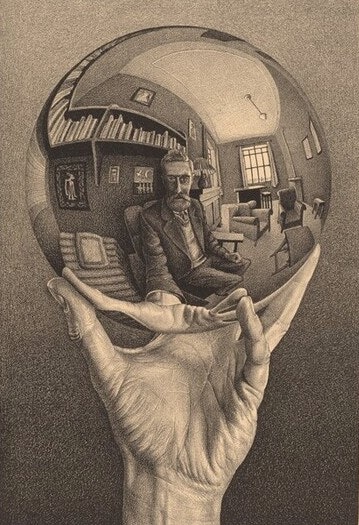 Scroll through the whole page to download all images before printing.
Scroll through the whole page to download all images before printing.M. C. Escher
Maurits Cornelis Escher (1898–1972) was a Dutch graphic artist who made mathematically inspired woodcuts, lithographs, and mezzotints. Despite wide popular interest, Escher was for most of his life neglected in the art world, even in his native Netherlands. He was 70 before a retrospective exhibition was held. In the late twentieth century, he became more widely appreciated, and in the twenty-first century he has been celebrated in exhibitions around the world. His work features mathematical objects and operations including impossible objects, explorations of infinity, reflection, symmetry, perspective, truncated and stellated polyhedra, hyperbolic geometry, and tessellations. Although Escher believed he had no mathematical ability, he interacted with the mathematicians George Pólya, Roger Penrose, Harold Coxeter and crystallographer Friedrich Haag, and conducted his own research into tessellation. (Wikipedia)
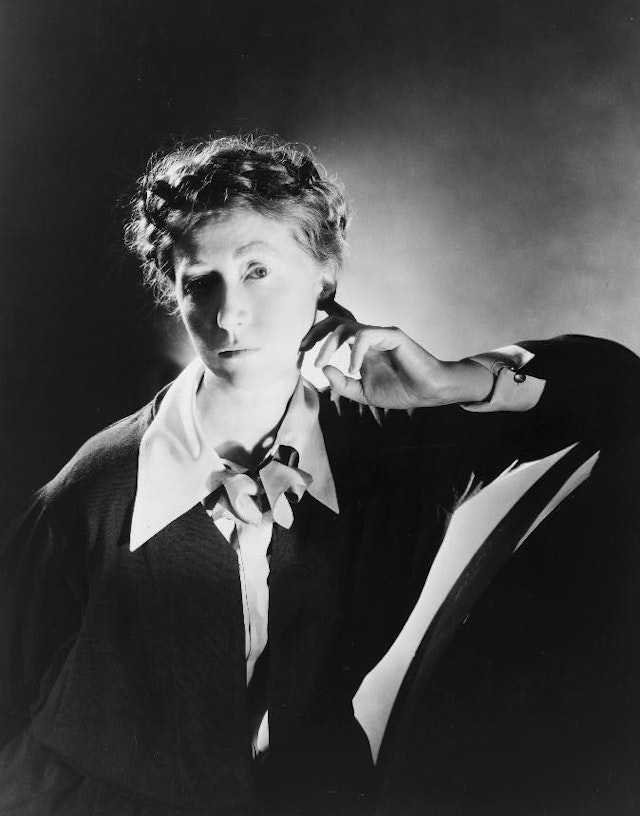 Scroll through the whole page to download all images before printing.
Scroll through the whole page to download all images before printing.Marianne Moore
Marianne Craig Moore (1887–1972) was an American modernist poet, critic, translator, and editor. Her poetry is noted for formal innovation, precise diction, irony, and wit. In 1918, three years after having her first poems published in The Egoist and Poetry, Moore moved to New York City’s Greenwich Village, where she socialized with many avant-garde artists, especially those associated with Others magazine. The innovative poems she was writing at that time received high praise from Ezra Pound, William Carlos Williams, T. S. Eliot, and later, Wallace Stevens. Her second book, Observations, won the Dial Award in 1924 and, from 1925 to 1929, she edited The Dial magazine, a literary and cultural journal. In 1933, Moore was awarded the Helen Haire Levinson Prize by Poetry magazine, and in 1951, her Collected Poems won the National Book Award, the Pulitzer Prize, and the Bollingen Prize. In the book’s introduction, T. S. Eliot wrote, “My conviction has remained unchanged for the last 14 years that Miss Moore’s poems form part of the small body of durable poetry written in our time.” (Wikipedia)
Works by Marianne Moore at Project Gutenberg
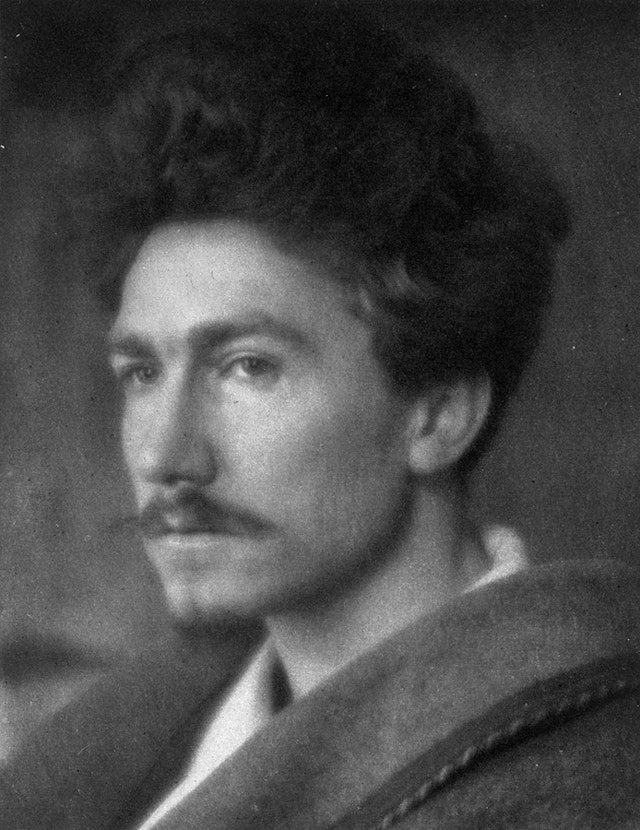 Scroll through the whole page to download all images before printing.
Scroll through the whole page to download all images before printing.Ezra Pound
Ezra Weston Loomis Pound (1885–1972) was an expatriate American poet and critic, a major figure in the early modernist poetry movement, and a fascist collaborator in Italy during World War II. His works include Ripostes (1912), Hugh Selwyn Mauberley (1920), and his 800-page epic poem, The Cantos (c. 1917–1962). Pound’s contribution to poetry began in the early twentieth century with his role in developing Imagism, a movement stressing precision and economy of language. Working in London as foreign editor of several American literary magazines, he helped discover and shape the work of contemporaries such as T. S. Eliot, Ernest Hemingway, and James Joyce. Pound moved to Italy in 1924 and through the 30s and 40s promoted an economic theory known as social credit, wrote for publications owned by the British fascist Sir Oswald Mosley, embraced Benito Mussolini’s fascism, and expressed support for Adolf Hitler. During World War II, he made hundreds of paid radio broadcasts for the Italian government, including in German-occupied Italy, attacking the United States, Franklin D. Roosevelt, Great Britain, international finance, munitions makers and mongers, and Jews, among others, as causes, abettors and prolongers of the world war, as a result of which he was arrested in 1945 by American forces in Italy on charges of treason. He spent months in a U.S. military camp in Pisa, including three weeks in an outdoor steel cage. Deemed unfit to stand trial, he was incarcerated in St. Elizabeths psychiatric hospital in Washington, D.C., for over 12 years. While in custody in Italy, Pound began work on sections of The Cantos, which were published as The Pisan Cantos (1948), for which he was awarded the Bollingen Prize for Poetry in 1949 by the Library of Congress, causing enormous controversy. After a campaign by his fellow writers, he was released from St. Elizabeths in 1958 and lived in Italy until his death in 1972. His economic and political views have ensured that his life and work remain controversial. (Wikipedia)
Works by Ezra Pound at Project Gutenberg and Internet Archive
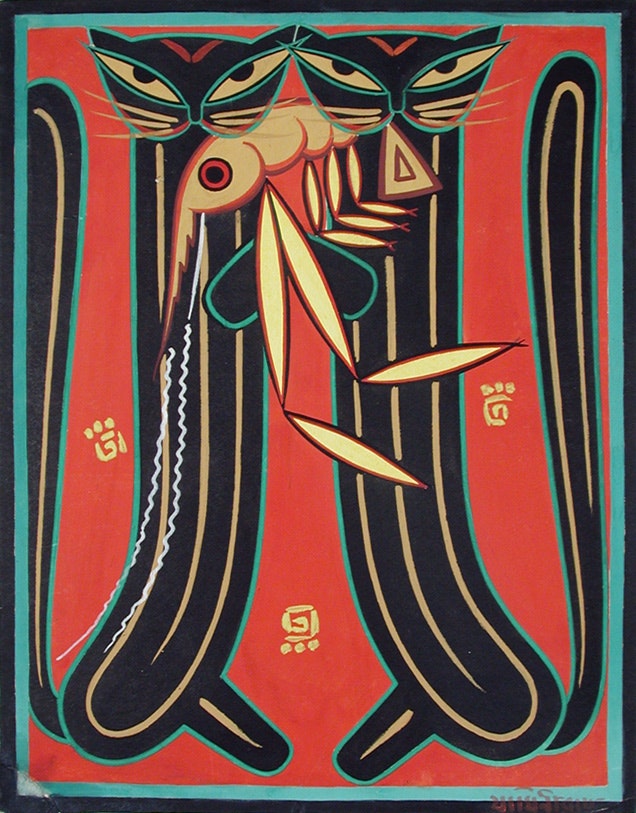 Scroll through the whole page to download all images before printing.
Scroll through the whole page to download all images before printing.Jamini Roy
Jamini Roy (1887–1972) was an Indian painter honored with the Government of India award of Padma Bhushan in 1954. Roy remains one of the most famous pupils of Abanindranath Tagore, another praised Indian artist and instructor. Roy began his career as a traditional portrait painter but, in the early 1920s, began to embrace a new style rooted in Bengali folk traditions. (Wikipedia)
Works by Jamina Roy at Wikimedia Commons






